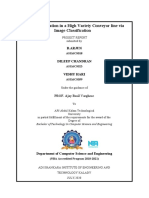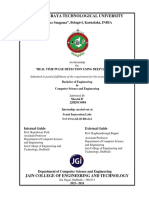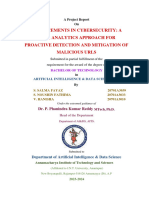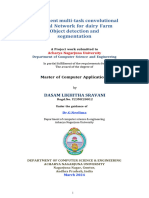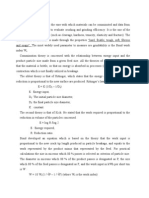0% found this document useful (0 votes)
143 views11 pagesPacking Automation in A High Variety Conveyor Line Via Image Classification
The document is a project report submitted by three students to the APJ Abdul Kalam Technological University for their Bachelor of Technology degree in Computer Science and Engineering. It describes implementing an image classification system using TensorFlow and an SSD MobileNet model to automate packing on a conveyor line with high product variety. The system was trained on an image dataset and is able to classify objects and verify products and barcodes in real-time to increase efficiency over human labor.
Uploaded by
sobako123Copyright
© © All Rights Reserved
We take content rights seriously. If you suspect this is your content, claim it here.
Available Formats
Download as PDF, TXT or read online on Scribd
0% found this document useful (0 votes)
143 views11 pagesPacking Automation in A High Variety Conveyor Line Via Image Classification
The document is a project report submitted by three students to the APJ Abdul Kalam Technological University for their Bachelor of Technology degree in Computer Science and Engineering. It describes implementing an image classification system using TensorFlow and an SSD MobileNet model to automate packing on a conveyor line with high product variety. The system was trained on an image dataset and is able to classify objects and verify products and barcodes in real-time to increase efficiency over human labor.
Uploaded by
sobako123Copyright
© © All Rights Reserved
We take content rights seriously. If you suspect this is your content, claim it here.
Available Formats
Download as PDF, TXT or read online on Scribd
/ 11
